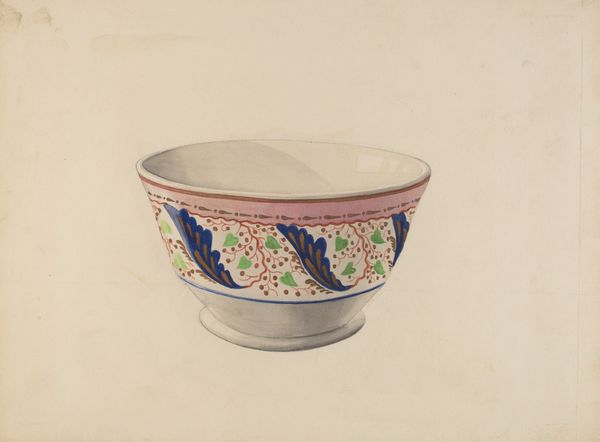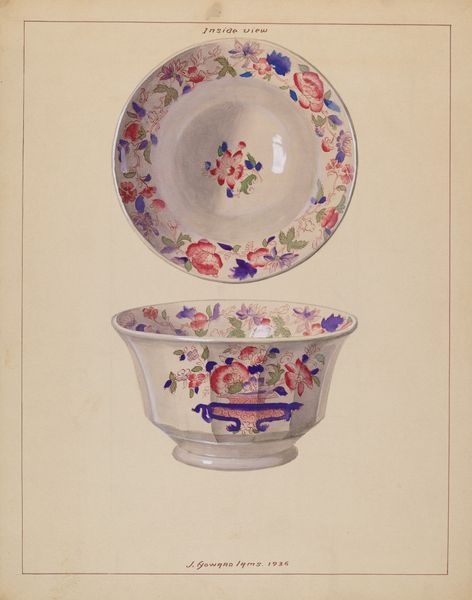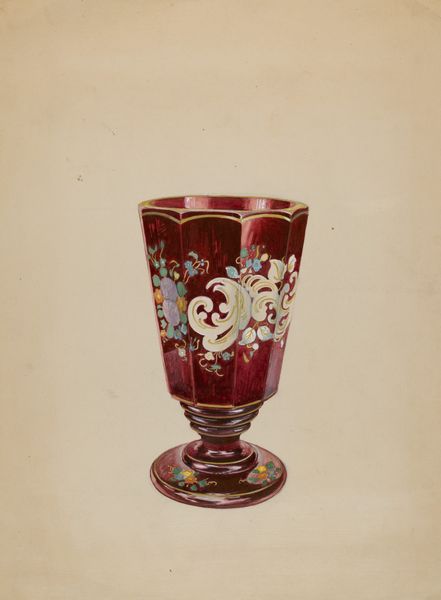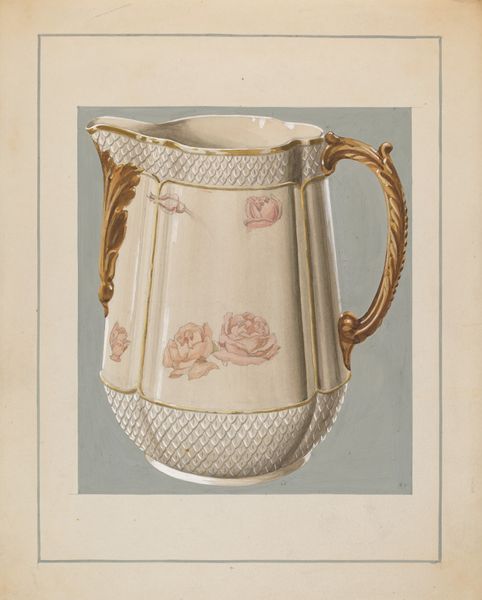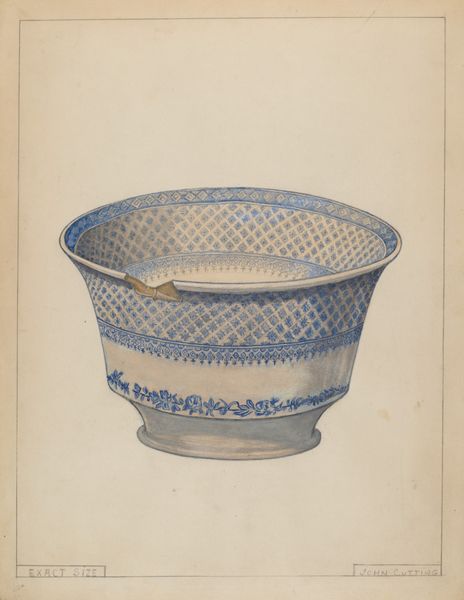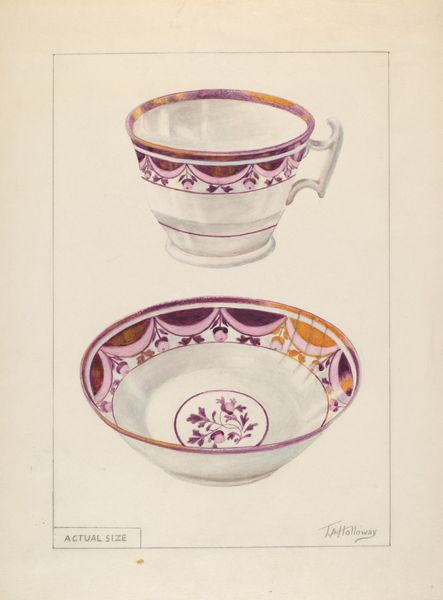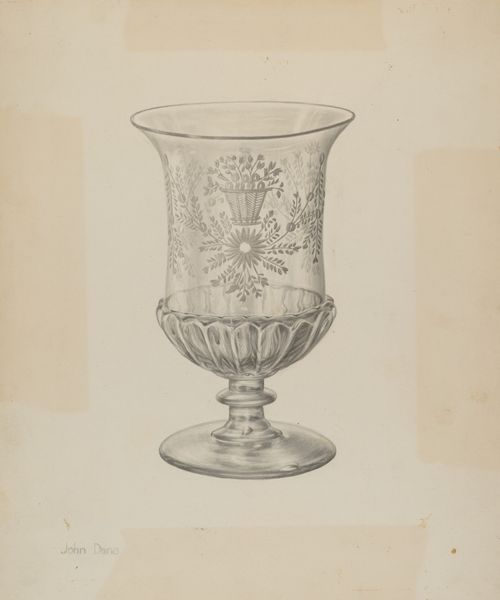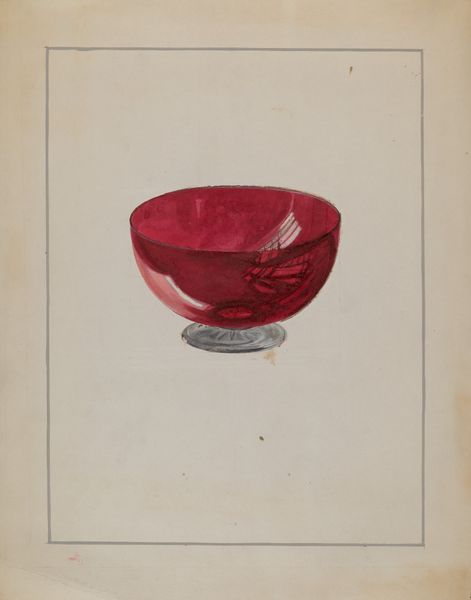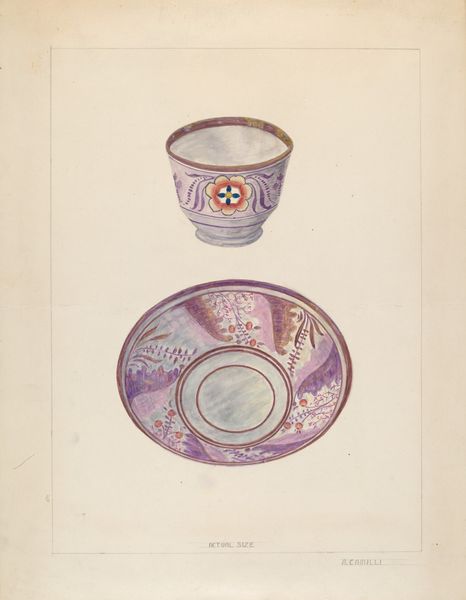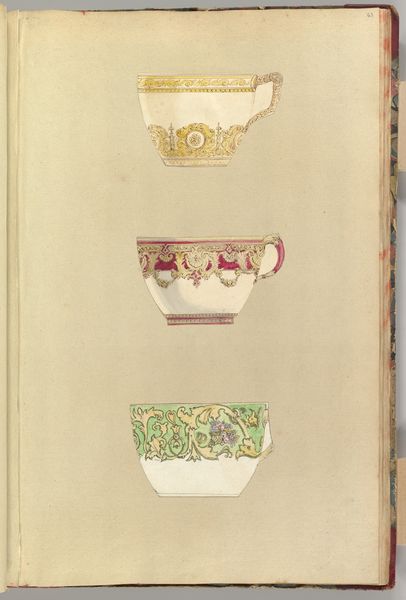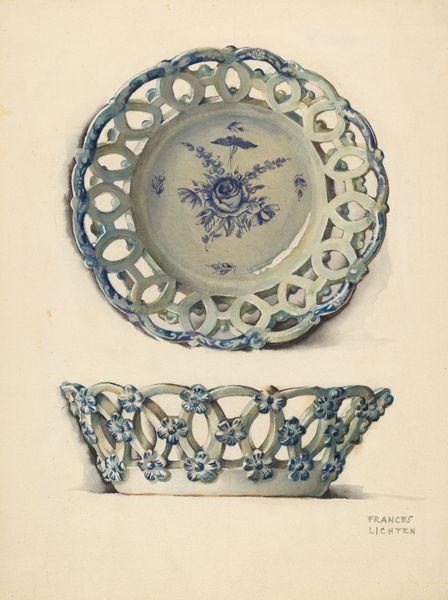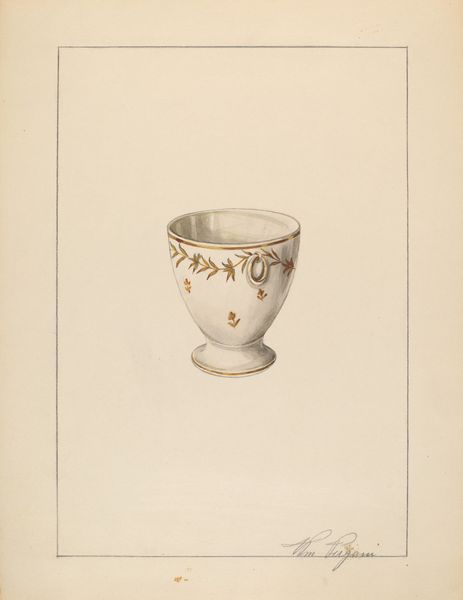
drawing, watercolor
#
drawing
#
water colours
#
watercolor
#
watercolour illustration
#
decorative-art
#
watercolor
Dimensions: overall: 35.7 x 27.9 cm (14 1/16 x 11 in.) Original IAD Object: 2 1/2" High
Copyright: National Gallery of Art: CC0 1.0
Curator: What strikes me immediately is the gentleness, almost a muted quality to this watercolor. It’s a drawing of a cup and a saucer, created around 1936 by J. Howard Iams, using watercolors. The colors are soft pinks and creams, giving it a vintage, slightly faded feel. Editor: That fading, or "gentleness," as you describe it, speaks to the fragility and impermanence often associated with the domestic sphere and particularly, perhaps, women's labor within it. The cup and saucer are adorned with these floral patterns, evoking a sense of tradition and idealized femininity but the delicacy might also suggest a vulnerability. Curator: It makes me think of my grandmother’s china cabinet, filled with delicate teacups she hardly ever used, each a repository of memories and stories. The drawing captures not just the object itself, but the *idea* of the cup, the feelings associated with it. The careful detail almost transcends the everyday object. Editor: Precisely. Consider the context: 1936, mid-Depression. There's a poignant tension here. On the one hand, there's an echo of escapism, a clinging to notions of genteel living even when it was increasingly out of reach for so many. And yet, also, these domestic items were still crucial tools of maintaining social structure during an incredibly difficult era. Curator: True. The decorative quality almost obscures the function, shifting its meaning beyond the merely practical. The cup and saucer almost become portraits in themselves, holding layers of socio-economic and personal meaning, don't you think? It reminds me that even in the humblest object there is potential to find artistic value. Editor: Absolutely. Looking closely, the composition feels deliberate, arranging two objects vertically as it almost evokes portraiture traditions and certainly asks us to pause on the aesthetic and the conceptual. The act of observation becomes political – insisting on value in places traditionally coded as secondary. Curator: It’s quite meditative isn’t it? A simple object holding so many echoes of a different time, it’s as though through it we see how objects act as time capsules themselves. Editor: Precisely; art is an act of embedding complex socio-cultural values. Every mark becomes infused with political and historical significance; therefore, there is always room for reinterpretation.
Comments
No comments
Be the first to comment and join the conversation on the ultimate creative platform.
